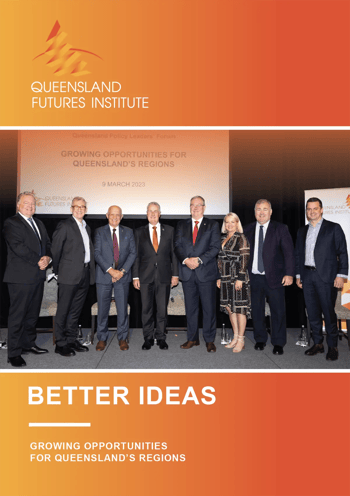BETTER IDEAS – GROWING OPPORTUNITIES FOR QUEENSLAND’S REGIONS
The key theme from the 2023 Queensland Futures Institute Growing Opportunities for Queensland’s Regions forum was the resilience and diversity of the State’s regions and strong leadership from Local Councils to meet the accessibility, infrastructure, and social needs of their communities. Having weathered impacts of Covid, the growth of the regions must be underpinned by continued strong governance and a rethinking of the necessary funding models required to support this.
There are many opportunities for the regions over the next decade in the lead up to the Olympics, which require investment in infrastructure to allow visitors to explore our State. Sustainable growth will be key to balancing the economic benefits of this with well-planned urban development which does not come at the cost of the environment. This will likely also require collaboration across all levels of government to achieve.
BETTER IDEAS – GROWING OPPORTUNITIES FOR QUEENSLAND’S REGIONS
The key theme from the 2023 Queensland Futures Institute Growing Opportunities for Queensland’s Regions forum was the resilience and diversity of the State’s regions and strong leadership from Local Councils to meet the accessibility, infrastructure, and social needs of their communities. Having weathered impacts of Covid, the growth of the regions must be underpinned by continued strong governance and a rethinking of the necessary funding models required to support this.
There are many opportunities for the regions over the next decade in the lead up to the Olympics, which require investment in infrastructure to allow visitors to explore our State. Sustainable growth will be key to balancing the economic benefits of this with well-planned urban development which does not come at the cost of the environment. This will likely also require collaboration across all levels of government to achieve.
BETTER IDEAS – GROWING OPPORTUNITIES FOR QUEENSLAND’S REGIONS
The key theme from the 2023 Queensland Futures Institute Growing Opportunities for Queensland’s Regions forum was the resilience and diversity of the State’s regions and strong leadership from Local Councils to meet the accessibility, infrastructure, and social needs of their communities. Having weathered impacts of Covid, the growth of the regions must be underpinned by continued strong governance and a rethinking of the necessary funding models required to support this.
There are many opportunities for the regions over the next decade in the lead up to the Olympics, which require investment in infrastructure to allow visitors to explore our State. Sustainable growth will be key to balancing the economic benefits of this with well-planned urban development which does not come at the cost of the environment. This will likely also require collaboration across all levels of government to achieve.
OUR SPEAKERS

Cr Krista Adams
Deputy Mayor
Brisbane City Council

Cr Jack Dempsey
Mayor
Bundaberg Regional Council
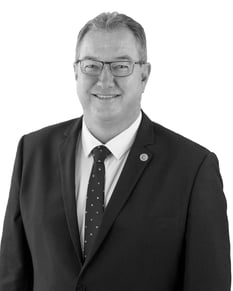
Cr Krista Adams
Deputy Mayor
Brisbane City Council

Cr Bob Manning OAM
Mayor
Cairns Regional Council
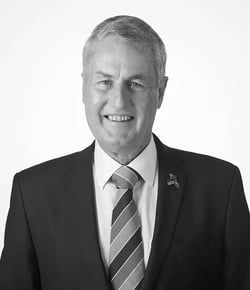
Cr Greg Williamson
Mayor
Mackay Regional Council

Moderator: David Edwards
Integrated Infrastructure Special Advisor
PwC
QFI THANKS ITS SPONSOR:

Comments from Panel
Question 1 – Cairns has had its fair share of economic challenges, such as Covid, which has had a devastating impact on the region’s economy. With tourism being the backbone of the region’s economy, what has the Council’s focused on to counter the negative shocks on this industry, particularly given the drivers of these shocks have been out of the control of the Local Government?

Cr Bob Manning OAM
-
There was a high level of uncertainty for everyone going into Covid. However, it became clear very quickly that the impacts were going to be bad. The tourism industry was quickly decimated, given we lost international visitors – 30% of the region’s total visitors – very quickly.
-
The impacts on the industry quickly took hold, and a number of companies didn’t survive the period, which was difficult for those involved in those businesses as well as the community.
-
The region was lucky to have the Crystal Brook Group come to Cairns just before Covid. The development they undertook would not have happened if they started later, and in domestic tourism which saved for the region. Having three hotels under construction at one stage meant that there was a role for Council in supporting capital works and improvements, including revamping the Esplanade and the dining precinct. This meant that by the time Covid was over, Cairns had significant drawcard assets and destinations in place to attract and serve locals and visitors.
-
Cairns therefore emerged from Covid fairly well given the great difficulties it faced early on. This came from having the drive and resilience to push through the difficulties of Covid.

Cr Bob Manning OAM
-
There was a high level of uncertainty for everyone going into Covid. However, it became clear very quickly that the impacts were going to be bad. The tourism industry was quickly decimated, given we lost international visitors – 30% of the region’s total visitors – very quickly.
-
The impacts on the industry quickly took hold, and a number of companies didn’t survive the period, which was difficult for those involved in those businesses as well as the community.
-
The region was lucky to have the Crystal Brook Group come to Cairns just before Covid. The development they undertook would not have happened if they started later, and in domestic tourism which saved for the region. Having three hotels under construction at one stage meant that there was a role for Council in supporting capital works and improvements, including revamping the Esplanade and the dining precinct. This meant that by the time Covid was over, Cairns had significant drawcard assets and destinations in place to attract and serve locals and visitors.
-
Cairns therefore emerged from Covid fairly well given the great difficulties it faced early on. This came from having the drive and resilience to push through the difficulties of Covid.

Cr Bob Manning OAM
-
There was a high level of uncertainty for everyone going into Covid. However, it became clear very quickly that the impacts were going to be bad. The tourism industry was quickly decimated, given we lost international visitors – 30% of the region’s total visitors – very quickly.
-
The impacts on the industry quickly took hold, and a number of companies didn’t survive the period, which was difficult for those involved in those businesses as well as the community.
-
The region was lucky to have the Crystal Brook Group come to Cairns just before Covid. The development they undertook would not have happened if they started later, and in domestic tourism which saved for the region. Having three hotels under construction at one stage meant that there was a role for Council in supporting capital works and improvements, including revamping the Esplanade and the dining precinct. This meant that by the time Covid was over, Cairns had significant drawcard assets and destinations in place to attract and serve locals and visitors.
-
Cairns therefore emerged from Covid fairly well given the great difficulties it faced early on. This came from having the drive and resilience to push through the difficulties of Covid.
Question 1 – After 11 years on the job and many years as CEO of the Cairns Port Authority prior to that, what do you consider your greatest legacy in terms of the region’s economic development?

Cr Bob Manning OAM
-
There have been many great ventures in tourism in Western Queensland, including the Stockman’s Hall of Fame. Being involved in the airport development was great accomplishment but these achievements come in cycles, so it is important to take advantage and make the most of opportunities like these when they come around.

Cr Bob Manning OAM
-
There have been many great ventures in tourism in Western Queensland, including the Stockman’s Hall of Fame. Being involved in the airport development was great accomplishment but these achievements come in cycles, so it is important to take advantage and make the most of opportunities like these when they come around.
Question: Moreton Bay is the third largest and one of the fastest growing Local Governments in the state. The Council has been very clear that well-planned economic development is key to manage population growth and deliver the region’s infrastructure and social service needs. I understand that you have coined the term – “Go green as you go for growth”. Can you tell me what you mean by this and give us a specific example of the tagline in action?
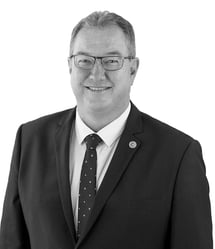
Peter Flannery
- Going green as we grow encapsulated sustainable growth for the region. We have about 10,000-12,000 people a year move to our region annually. This underpins hopes to grow into a city council, not a regional council, because we are dealing with development on a large scale. For example, this requires consistent greenfield development to spread out our urban footprint.
- This urban growth is easy to do given the land is cheap, but the challenge is around planning for this properly This growth places strain on major infrastructure, which has reached the size of requiring focus from the State and Federal Government.
- We often run surveys to keep across the community and have found the number one reason people moved to the Morton Bay region was because of the natural beauty of the area, so protecting this as we grow must remain a focus.
- We need to accommodate the urban growth and prioritise the environment. The Council has been bold in aiming for both of these conflicting objectives, and undertaken work through planning schemes and direct Council actions to achieve this. We are making a case that 75% of our region will remain green space, without having to impede on urban development.
- About 20% of this is inside the urban footprint, and Council is allowing about another 5% of growth to occur, mainly around Caboolture West and around fringe growth areas. This planning will ensure the environment is a focus alongside growth, delivering green corridors, nature areas, parks, playgrounds, and green space that people are looking for and is unique in Southeast Queensland.
- There are a number of examples of Council trying to address both of these objectives, exemplified by the environmental levy introduced 2020. This enabled the purchasing of land that had the potential to be developed, protecting them, and either re-vegetating them or keeping native vegetation there, ensuring the protection of habitat and safety of wildlife. This supported growth whilst balancing the protection of the environment.
- Another example of biodiversity measures in the koala sanctuary, which has grown its population to from 50 to 128 koalas in four years.
- A final example of reducing emissions at land fill sites reflects the Council leading by example on these issues and bringing the community along the journey as the region grows and moves forward.

Peter Flannery
- Going green as we grow encapsulated sustainable growth for the region. We have about 10,000-12,000 people a year move to our region annually. This underpins hopes to grow into a city council, not a regional council, because we are dealing with development on a large scale. For example, this requires consistent greenfield development to spread out our urban footprint.
- This urban growth is easy to do given the land is cheap, but the challenge is around planning for this properly This growth places strain on major infrastructure, which has reached the size of requiring focus from the State and Federal Government.
- We often run surveys to keep across the community and have found the number one reason people moved to the Morton Bay region was because of the natural beauty of the area, so protecting this as we grow must remain a focus.
- We need to accommodate the urban growth and prioritise the environment. The Council has been bold in aiming for both of these conflicting objectives, and undertaken work through planning schemes and direct Council actions to achieve this. We are making a case that 75% of our region will remain green space, without having to impede on urban development.
- About 20% of this is inside the urban footprint, and Council is allowing about another 5% of growth to occur, mainly around Caboolture West and around fringe growth areas. This planning will ensure the environment is a focus alongside growth, delivering green corridors, nature areas, parks, playgrounds, and green space that people are looking for and is unique in Southeast Queensland.
- There are a number of examples of Council trying to address both of these objectives, exemplified by the environmental levy introduced 2020. This enabled the purchasing of land that had the potential to be developed, protecting them, and either re-vegetating them or keeping native vegetation there, ensuring the protection of habitat and safety of wildlife. This supported growth whilst balancing the protection of the environment.
- Another example of biodiversity measures in the koala sanctuary, which has grown its population to from 50 to 128 koalas in four years.
- A final example of reducing emissions at land fill sites reflects the Council leading by example on these issues and bringing the community along the journey as the region grows and moves forward.
Question
I have had a long involvement in the resources sector in Queensland and when the chips are down in the Queensland economy, whether it be the Global Financial Crisis or Covid, the resources sector and regions like Mackay are often the safety net that cushions the State’s finances and the economy. I am also conscious of how many people in this room are dependent on a vibrant and prosperous resources sector, the wealth creation it brings and its deep supply chains and flow-on benefits. Council’s vision is “Create opportunities to thrive”. Can you flesh that out for us and what it means for economic development in your region?
Question
I have had a long involvement in the resources sector in Queensland and when the chips are down in the Queensland economy, whether it be the Global Financial Crisis or Covid, the resources sector and regions like Mackay are often the safety net that cushions the State’s finances and the economy. I am also conscious of how many people in this room are dependent on a vibrant and prosperous resources sector, the wealth creation it brings and its deep supply chains and flow-on benefits. Council’s vision is “Create opportunities to thrive”. Can you flesh that out for us and what it means for economic development in your region?
Question
I have had a long involvement in the resources sector in Queensland and when the chips are down in the Queensland economy, whether it be the Global Financial Crisis or Covid, the resources sector and regions like Mackay are often the safety net that cushions the State’s finances and the economy. I am also conscious of how many people in this room are dependent on a vibrant and prosperous resources sector, the wealth creation it brings and its deep supply chains and flow-on benefits. Council’s vision is “Create opportunities to thrive”. Can you flesh that out for us and what it means for economic development in your region?

Cr Greg Williamson
- It’s an interesting concept when you look at the regions and analyse how they can contribute to the Queensland and the national economy. We’ve been underpinned by the resources sector since the mid-1970s, and the resources sector still underpins just over 50% of our regional GDP. But there’s also a couple of other contributing factors to our economy. Tourism is one, and what Covid did for us was increase our tourism return to the regional economy, now valued at about $740 million just from domestic tourism.
- The other area is agriculture, which will deliver high value diversification for our economy in the future. Over the last 12 months, we have had discussions with CSIRO’s private enterprise company ‘Main Sequence’ and a number of potential investors from around the world to use sugar as the bio content for the future.
- We grow about a third of Australia’s sugar and in our valley, we have about 200,000 hectares of good quality agricultural land. Currently, 100,000 of that is dedicated to the growing of sugar cane, so there is potential to grow the industry.
- The biofuture is more than a buzzword – given scientists predict we won’t be able to feed the world’s population in 2050, we have to produce protein for the world – and sugar can do that.
- Sugar molecules – fructose and glucose – are much higher in carbon content than corn syrup. It is possible to bio-brew milk out of the carbon content of sugar. This bio-brewed product has great potential. If we can get this right for Queensland Biofutures, using sugar to produce milk, and egg white too, which is the most in demand protein in the world, this opportunity will be bigger than coal for Queensland.
- So that’s the diversification that we are focusing on because we really believe we can as a state make a mark in biofutures to supply feedstock and protein to the world.

Cr Greg Williamson
- It’s an interesting concept when you look at the regions and analyse how they can contribute to the Queensland and the national economy. We’ve been underpinned by the resources sector since the mid-1970s, and the resources sector still underpins just over 50% of our regional GDP. But there’s also a couple of other contributing factors to our economy. Tourism is one, and what Covid did for us was increase our tourism return to the regional economy, now valued at about $740 million just from domestic tourism.
- The other area is agriculture, which will deliver high value diversification for our economy in the future. Over the last 12 months, we have had discussions with CSIRO’s private enterprise company ‘Main Sequence’ and a number of potential investors from around the world to use sugar as the bio content for the future.
- We grow about a third of Australia’s sugar and in our valley, we have about 200,000 hectares of good quality agricultural land. Currently, 100,000 of that is dedicated to the growing of sugar cane, so there is potential to grow the industry.
- The biofuture is more than a buzzword – given scientists predict we won’t be able to feed the world’s population in 2050, we have to produce protein for the world – and sugar can do that.
- Sugar molecules – fructose and glucose – are much higher in carbon content than corn syrup. It is possible to bio-brew milk out of the carbon content of sugar. This bio-brewed product has great potential. If we can get this right for Queensland Biofutures, using sugar to produce milk, and egg white too, which is the most in demand protein in the world, this opportunity will be bigger than coal for Queensland.
- So that’s the diversification that we are focusing on because we really believe we can as a state make a mark in biofutures to supply feedstock and protein to the world.

Cr Greg Williamson
- It’s an interesting concept when you look at the regions and analyse how they can contribute to the Queensland and the national economy. We’ve been underpinned by the resources sector since the mid-1970s, and the resources sector still underpins just over 50% of our regional GDP. But there’s also a couple of other contributing factors to our economy. Tourism is one, and what Covid did for us was increase our tourism return to the regional economy, now valued at about $740 million just from domestic tourism.
- The other area is agriculture, which will deliver high value diversification for our economy in the future. Over the last 12 months, we have had discussions with CSIRO’s private enterprise company ‘Main Sequence’ and a number of potential investors from around the world to use sugar as the bio content for the future.
- We grow about a third of Australia’s sugar and in our valley, we have about 200,000 hectares of good quality agricultural land. Currently, 100,000 of that is dedicated to the growing of sugar cane, so there is potential to grow the industry.
- The biofuture is more than a buzzword – given scientists predict we won’t be able to feed the world’s population in 2050, we have to produce protein for the world – and sugar can do that.
- Sugar molecules – fructose and glucose – are much higher in carbon content than corn syrup. It is possible to bio-brew milk out of the carbon content of sugar. This bio-brewed product has great potential. If we can get this right for Queensland Biofutures, using sugar to produce milk, and egg white too, which is the most in demand protein in the world, this opportunity will be bigger than coal for Queensland.
- So that’s the diversification that we are focusing on because we really believe we can as a state make a mark in biofutures to supply feedstock and protein to the world.
Question
PwC, like many in this room who live in Brisbane, are very dependent on prosperous and strong regional economies for their jobs, particularly through sectors like mining, agriculture and tourism.
Likewise, the regions also depend on Brisbane in many ways – it is the gateway to the regions, Brisbane’s liveability, lifestyle, infrastructure and institutions attract the skills and new talent that is essential to drive economic growth in regional Queensland, and major events like the Olympics will put an international spotlight on the entire State.
You lead economic development in the Council and are the driving force behind Brisbane Economic Development Agency. How do you work with regional Mayors and their Councils to grow the economy of entire State?
Question
PwC, like many in this room who live in Brisbane, are very dependent on prosperous and strong regional economies for their jobs, particularly through sectors like mining, agriculture and tourism.
Likewise, the regions also depend on Brisbane in many ways – it is the gateway to the regions, Brisbane’s liveability, lifestyle, infrastructure and institutions attract the skills and new talent that is essential to drive economic growth in regional Queensland, and major events like the Olympics will put an international spotlight on the entire State.
You lead economic development in the Council and are the driving force behind Brisbane Economic Development Agency. How do you work with regional Mayors and their Councils to grow the economy of entire State?

Cr Greg Williamson
- It’s an interesting concept when you look at the regions and analyse how they can contribute to the Queensland and the national economy. We’ve been underpinned by the resources sector since the mid-1970s, and the resources sector still underpins just over 50% of our regional GDP. But there’s also a couple of other contributing factors to our economy. Tourism is one, and what Covid did for us was increase our tourism return to the regional economy, now valued at about $740 million just from domestic tourism.
- The other area is agriculture, which will deliver high value diversification for our economy in the future. Over the last 12 months, we have had discussions with CSIRO’s private enterprise company ‘Main Sequence’ and a number of potential investors from around the world to use sugar as the bio content for the future.
- We grow about a third of Australia’s sugar and in our valley, we have about 200,000 hectares of good quality agricultural land. Currently, 100,000 of that is dedicated to the growing of sugar cane, so there is potential to grow the industry.
- The biofuture is more than a buzzword – given scientists predict we won’t be able to feed the world’s population in 2050, we have to produce protein for the world – and sugar can do that.
- Sugar molecules – fructose and glucose – are much higher in carbon content than corn syrup. It is possible to bio-brew milk out of the carbon content of sugar. This bio-brewed product has great potential. If we can get this right for Queensland Biofutures, using sugar to produce milk, and egg white too, which is the most in demand protein in the world, this opportunity will be bigger than coal for Queensland.
- So that’s the diversification that we are focusing on because we really believe we can as a state make a mark in biofutures to supply feedstock and protein to the world.
Question
PwC, like many in this room who live in Brisbane, are very dependent on prosperous and strong regional economies for their jobs, particularly through sectors like mining, agriculture and tourism.
Likewise, the regions also depend on Brisbane in many ways – it is the gateway to the regions, Brisbane’s liveability, lifestyle, infrastructure and institutions attract the skills and new talent that is essential to drive economic growth in regional Queensland, and major events like the Olympics will put an international spotlight on the entire State.
You lead economic development in the Council and are the driving force behind Brisbane Economic Development Agency. How do you work with regional Mayors and their Councils to grow the economy of entire State?

Cr Krista Adams
- The Olympics is definitely a shining light for Queensland, but there is a lot to be done in the region over the next 10 years and beyond. The Brisbane Olympics started with the Southeast Queensland Council of Mayors driving awareness around the need for infrastructure, in transport, in economic development, in growth, and in the sustainability of the region. The Council sought the attention of the State and Federal Government by coming together with the transport plan which then led to the bid for the Olympics.
- For the resources industry, Brisbane is the biggest mining city in Queensland. We know if Brisbane businesses do well, Brisbane does well. But this is also important for the region. We need to make sure the regions are accessible from Brisbane, ensuring economic opportunities, places to stay and places to work. We are attracting skills and talent from Melbourne and Sydney and now have the opportunity to bring this all together through the Olympics.
- When we were announced in 2021 as the future Olympic host city, we had a 1500% increase in our Google views that night. We need to leverage this opportunity to become a stronger, larger and more sustainable city, but also bring the regions together, economically and physically through infrastructure. As Brisbane grows, it will be important to provide the accessibility in order to be a 30-minute city.
- Tourism is a big component of this growth. We need to show off the natural environment that people love about our region. This persists across Southeast Queensland, between Brisbane, Morton Bay, the Sunshine Coast and the Gold Coast. It is an advantage that these regions are so seamless and that travellers don’t see the boundaries.
- This will be important for the Olympics in putting the entire region forward. Visitors will fly into Brisbane, but events will be held in Cairns, Townsville and Mackay. We will have visitors exploring our whole state, spending time and money to get to know Queensland. So, we need to ensure we provide strong connections and the transport infrastructure required to move around easily – whether it’s flights to Mount Isa or getting that highway fixed to drive to Mackay.

Cr Krista Adams
- The Olympics is definitely a shining light for Queensland, but there is a lot to be done in the region over the next 10 years and beyond. The Brisbane Olympics started with the Southeast Queensland Council of Mayors driving awareness around the need for infrastructure, in transport, in economic development, in growth, and in the sustainability of the region. The Council sought the attention of the State and Federal Government by coming together with the transport plan which then led to the bid for the Olympics.
- For the resources industry, Brisbane is the biggest mining city in Queensland. We know if Brisbane businesses do well, Brisbane does well. But this is also important for the region. We need to make sure the regions are accessible from Brisbane, ensuring economic opportunities, places to stay and places to work. We are attracting skills and talent from Melbourne and Sydney and now have the opportunity to bring this all together through the Olympics.
- When we were announced in 2021 as the future Olympic host city, we had a 1500% increase in our Google views that night. We need to leverage this opportunity to become a stronger, larger and more sustainable city, but also bring the regions together, economically and physically through infrastructure. As Brisbane grows, it will be important to provide the accessibility in order to be a 30-minute city.
- Tourism is a big component of this growth. We need to show off the natural environment that people love about our region. This persists across Southeast Queensland, between Brisbane, Morton Bay, the Sunshine Coast and the Gold Coast. It is an advantage that these regions are so seamless and that travellers don’t see the boundaries.
- This will be important for the Olympics in putting the entire region forward. Visitors will fly into Brisbane, but events will be held in Cairns, Townsville and Mackay. We will have visitors exploring our whole state, spending time and money to get to know Queensland. So, we need to ensure we provide strong connections and the transport infrastructure required to move around easily – whether it’s flights to Mount Isa or getting that highway fixed to drive to Mackay.
Question
Last year, you passionately spoke to the audience about how the economy of Bundaberg has deepened and diversified the region’s strengths. Although we are all united as Queenslanders, all regions compete for investment capital – and the competition extends well beyond our borders.
I’d like you to choose one sector that you think can really shift the dial for Bundaberg’s economy, and briefly describe what Council is doing to drive investment and growth in this sector?
Question
Last year, you passionately spoke to the audience about how the economy of Bundaberg has deepened and diversified the region’s strengths. Although we are all united as Queenslanders, all regions compete for investment capital – and the competition extends well beyond our borders.
I’d like you to choose one sector that you think can really shift the dial for Bundaberg’s economy, and briefly describe what Council is doing to drive investment and growth in this sector?

Cr Jack Dempsey
- Bundaberg is Australia’s best kept secret but has recently faced a number of challenges and benefited from a number of opportunities. This is evident in thinking about the highway of infrastructure required to ensure access to the region. Delivering this infrastructure requires a high level of collaboration and advocacy by the 22 government representatives from Bundaberg to the coastline of Western Australia (60% of mainland Australia).
- To achieve infrastructure projects like this, we need to be able to collaborate across levels of government and advocate for the best outcomes for communities and the region regardless of political cycles, which are a key contributor to time and cost blowouts. This is exemplified by past infrastructure projects which have suffered blowouts due to poor governance and risk management.
- Regarding funding, the average tax dollar is broken up to 83% towards the Federal Government, 14% to State Government and 3% to Local Government. Yet, Local Government drives 33% of infrastructure development.
- Grants are also a major contributor to this funding. From the 537 Australian Local Governments, 20% rely solely on grant funding. It is therefore critical to ensure stability around these in order to achieve an adequate funding model to deliver infrastructure. Further, between Federal and State Government, 10-12% of these funds are spent in administration before Local Council can access them. This needs to be addressed to achieve the best value and allow Councils to deliver for their communities.
- Bundaberg’s economic growth is 5.4%, the second highest in the state. This is in contrast to six years ago when growth was -3%. Bundaberg’s population is now over 102,000 and Wide Bay is 330,000 people – 30,000 more than the whole in North Queensland.
- Bundaberg survived Covid quickly through its agility and resilience in the agricultural sector. The agriculture and Bioeconomy are key sectors and play an important role in reaching Net Zero by 2030. Bundaberg is well and truly ahead of this target.
- It will remain important to ensure accessibility of the region to Southeast Queensland to support further growth, deliver the adequate infrastructure and attract visitors.
- It is also competitive when comparing land to other regional centres as well as Logan, Ipswich and Morton Bay, with green space development for residential blocks or acreage for these areas being 28,000 hectares, while Bundaberg alone has 15,000. However, the development of these areas won’t be achieved until we have the infrastructure required to support this. Developing this will ensure a clean, green, diverse, resilient Queensland economy which is also able to support a range of industries, such as manufacturing, which Bundaberg is fourth in regional Queensland.
- With great developments such as Queens Wharf in Brisbane, we will be able to support the ‘hub-and-spoke’ model of Queensland, attracting visitors and ensuring they have access to the rest of the great state. There’s no other state which has great coastal, outback, and other areas in the West, as well as international borders with Papua New Guinea. This reflects not only the attractiveness for tourism, but opportunity to improve Australia’s relationship with our South Pacific neighbours. • Bundaberg is also close to the Southern Great Barrier Reef, which is critical for tourism. • Bundaberg is achieving a lot across these areas but requires stable decision making to deliver projects, funding and collaboration required to support this growth.

Cr Jack Dempsey
- Bundaberg is Australia’s best kept secret but has recently faced a number of challenges and benefited from a number of opportunities. This is evident in thinking about the highway of infrastructure required to ensure access to the region. Delivering this infrastructure requires a high level of collaboration and advocacy by the 22 government representatives from Bundaberg to the coastline of Western Australia (60% of mainland Australia).
- To achieve infrastructure projects like this, we need to be able to collaborate across levels of government and advocate for the best outcomes for communities and the region regardless of political cycles, which are a key contributor to time and cost blowouts. This is exemplified by past infrastructure projects which have suffered blowouts due to poor governance and risk management.
- Regarding funding, the average tax dollar is broken up to 83% towards the Federal Government, 14% to State Government and 3% to Local Government. Yet, Local Government drives 33% of infrastructure development.
- Grants are also a major contributor to this funding. From the 537 Australian Local Governments, 20% rely solely on grant funding. It is therefore critical to ensure stability around these in order to achieve an adequate funding model to deliver infrastructure. Further, between Federal and State Government, 10-12% of these funds are spent in administration before Local Council can access them. This needs to be addressed to achieve the best value and allow Councils to deliver for their communities.
- Bundaberg’s economic growth is 5.4%, the second highest in the state. This is in contrast to six years ago when growth was -3%. Bundaberg’s population is now over 102,000 and Wide Bay is 330,000 people – 30,000 more than the whole in North Queensland.
- Bundaberg survived Covid quickly through its agility and resilience in the agricultural sector. The agriculture and Bioeconomy are key sectors and play an important role in reaching Net Zero by 2030. Bundaberg is well and truly ahead of this target.
- It will remain important to ensure accessibility of the region to Southeast Queensland to support further growth, deliver the adequate infrastructure and attract visitors.
- It is also competitive when comparing land to other regional centres as well as Logan, Ipswich and Morton Bay, with green space development for residential blocks or acreage for these areas being 28,000 hectares, while Bundaberg alone has 15,000. However, the development of these areas won’t be achieved until we have the infrastructure required to support this. Developing this will ensure a clean, green, diverse, resilient Queensland economy which is also able to support a range of industries, such as manufacturing, which Bundaberg is fourth in regional Queensland.
- With great developments such as Queens Wharf in Brisbane, we will be able to support the ‘hub-and-spoke’ model of Queensland, attracting visitors and ensuring they have access to the rest of the great state. There’s no other state which has great coastal, outback, and other areas in the West, as well as international borders with Papua New Guinea. This reflects not only the attractiveness for tourism, but opportunity to improve Australia’s relationship with our South Pacific neighbours. • Bundaberg is also close to the Southern Great Barrier Reef, which is critical for tourism. • Bundaberg is achieving a lot across these areas but requires stable decision making to deliver projects, funding and collaboration required to support this growth.
Audience Questions
Question
Economic growth is critically important. What do you see as the role of Council owned investment corporations to achieve this?
Question
Economic growth is critically important. What do you see as the role of Council owned investment corporations to achieve this?

Cr Jack Dempsey
-
Corporations like QIC have provided stable structures and proper governance needed to deliver projects. There are substantial amounts of funding in Local Government Councils ready to be deployed. These funds are better deployed by corporations able to invest them over short, medium, and long durations to make decent returns and deliver projects whilst grants are obtained.

Cr Jack Dempsey
-
Corporations like QIC have provided stable structures and proper governance needed to deliver projects. There are substantial amounts of funding in Local Government Councils ready to be deployed. These funds are better deployed by corporations able to invest them over short, medium, and long durations to make decent returns and deliver projects whilst grants are obtained.

Cr Krista Adams
-
The City of Brisbane Investment Corporation was set up 15-16 years ago and has been very important to work quickly where the bureaucracy of Local Government does not allow. This provides flexibility and can be seen as a ‘futures fund’ able to be deployed to develop opportunities and achieve financial returns and benefit communities.
-
In thinking about being ‘green as you grow’ CBIC is linked to sustainability and environmental objectives around green space and parks. Brisbane is currently comprised of 38% green areas and is aiming for 45% through the purchase of land and taking advantage of opportunities around bushland and floodplains. This is achieved through CBIC as it provides a source of revenue needed to do this.

Cr Krista Adams
-
The City of Brisbane Investment Corporation was set up 15-16 years ago and has been very important to work quickly where the bureaucracy of Local Government does not allow. This provides flexibility and can be seen as a ‘futures fund’ able to be deployed to develop opportunities and achieve financial returns and benefit communities.
-
In thinking about being ‘green as you grow’ CBIC is linked to sustainability and environmental objectives around green space and parks. Brisbane is currently comprised of 38% green areas and is aiming for 45% through the purchase of land and taking advantage of opportunities around bushland and floodplains. This is achieved through CBIC as it provides a source of revenue needed to do this.

Cr Greg Williamson
- We’ve initiated the winding up of our council-owned enterprise, as we would rather facilitate true private enterprise and private equity in our region to drive growth. You cannot continue to rely on public funding for infrastructure projects or for commercial projects if the private sector is not willing to invest, so Council’s focus is facilitating private investment in the region by ensuring attractive opportunities, without having to using public funding.

Cr Greg Williamson
- We’ve initiated the winding up of our council-owned enterprise, as we would rather facilitate true private enterprise and private equity in our region to drive growth. You cannot continue to rely on public funding for infrastructure projects or for commercial projects if the private sector is not willing to invest, so Council’s focus is facilitating private investment in the region by ensuring attractive opportunities, without having to using public funding.

Cr Peter Flannery
- Millovate (The Mill) was set up three years ago after Council purchased 65 hectares of land in a 110-hectare PDA development. This was done to achieve social outcome around building the first Greenfield university in Australia in 20 years, because the conversion rates of students going from high school to tertiary were the lowest in the country. This now has 4,000 students, 41% of whom are the first in their family to go to university.
- This shows these types of developments are not necessarily about making economic return, but rather are a social investment as well. The Mill’s purpose is to sell that part of our region. This required collaboration with the developers, who are better positioned to make the most of an opportunity like this than Council trying to be developers. This is partially due to red tape and because the private sector is competitively placed to achieve the best outcomes.

Cr Peter Flannery
- Millovate (The Mill) was set up three years ago after Council purchased 65 hectares of land in a 110-hectare PDA development. This was done to achieve social outcome around building the first Greenfield university in Australia in 20 years, because the conversion rates of students going from high school to tertiary were the lowest in the country. This now has 4,000 students, 41% of whom are the first in their family to go to university.
- This shows these types of developments are not necessarily about making economic return, but rather are a social investment as well. The Mill’s purpose is to sell that part of our region. This required collaboration with the developers, who are better positioned to make the most of an opportunity like this than Council trying to be developers. This is partially due to red tape and because the private sector is competitively placed to achieve the best outcomes.

Cr Bob Manning
- We’ve always been a council that wanted to make things happen, cutting red tape. However, local government is the closest to communities and the regions and best placed to meet the needs of the regions. This is much closer than the work of State and Federal Governments and therefore can be much more effective in delivering these outcomes.

Cr Bob Manning
- We’ve always been a council that wanted to make things happen, cutting red tape. However, local government is the closest to communities and the regions and best placed to meet the needs of the regions. This is much closer than the work of State and Federal Governments and therefore can be much more effective in delivering these outcomes.
Question For Cr Jack Dempsey – you said before that you need stable decision making in order for your region to go forward. Whether or not you were thinking about Paradise Dam – which created a lot of angst between farmers and the community – is that an example where State-level decision making is not in line with what the regions’ needs?
Question For Cr Jack Dempsey – you said before that you need stable decision making in order for your region to go forward. Whether or not you were thinking about Paradise Dam – which created a lot of angst between farmers and the community – is that an example where State-level decision making is not in line with what the regions’ needs?

Cr Jack Dempsey
- Whether it is dams, hospitals, education, roads, or other infrastructure, there will always be advantages and disadvantages. Paradise Dam gave Bundaberg the second most secure water supply in Australia and greatly underpins the agricultural sector. That’s why it’s important to support diversification in agriculture, whether in cane or macadamias – which is what the dam achieves. It provides security and is critical infrastructure which brings rich and productive opportunities, not just to Bundaberg, but to the whole Burnett region.

Cr Jack Dempsey
- Whether it is dams, hospitals, education, roads, or other infrastructure, there will always be advantages and disadvantages. Paradise Dam gave Bundaberg the second most secure water supply in Australia and greatly underpins the agricultural sector. That’s why it’s important to support diversification in agriculture, whether in cane or macadamias – which is what the dam achieves. It provides security and is critical infrastructure which brings rich and productive opportunities, not just to Bundaberg, but to the whole Burnett region.
Question
Will having a constitutional discussion around the structure of the federation ensure that states more closely resemble the communities and economic interests of our regions? Is this a timely discussion that we should be having? How important is the notion of regional government versus 19th century State and unempowered Local Government?
Question
Will having a constitutional discussion around the structure of the federation ensure that states more closely resemble the communities and economic interests of our regions? Is this a timely discussion that we should be having? How important is the notion of regional government versus 19th century State and unempowered Local Government?

Cr Krista Adams
-
We have always spoken strongly about constitutional recognition for Councils. Given Federal assistance grants are a major source of funding, which requires going through the State to receive because Councils don’t have constitutional recognition makes it really difficult to deliver for communities and the regions. Although this has been raised at the Federal level, this hasn’t received traction, despite it being so beneficial to Councils in delivering the best outcomes.

Cr Krista Adams
-
We have always spoken strongly about constitutional recognition for Councils. Given Federal assistance grants are a major source of funding, which requires going through the State to receive because Councils don’t have constitutional recognition makes it really difficult to deliver for communities and the regions. Although this has been raised at the Federal level, this hasn’t received traction, despite it being so beneficial to Councils in delivering the best outcomes.

Cr Greg Williamson
-
Although this conversation has been around for a long time, Councils give it more and more credence over time. Given that from Bundaberg due west, 62% of the continental land mass of Australia is north of that line, represented by only 10 representatives in the Federal House of 150 people. In Queensland, 1.3 million people live north of Bundaberg but are represented by only five Federal members and two of Queensland’s 12 senators. This compares to Tasmania which has the same representation for 500,000 people. • Representation in the Federal house is the big problem for Local Government. This is reflected by the 3% of the taxes going to Local Government, despite delivering 30% of the infrastructure needs of local communities such as water, sewage, development, roads and drains.

Cr Greg Williamson
-
Although this conversation has been around for a long time, Councils give it more and more credence over time. Given that from Bundaberg due west, 62% of the continental land mass of Australia is north of that line, represented by only 10 representatives in the Federal House of 150 people. In Queensland, 1.3 million people live north of Bundaberg but are represented by only five Federal members and two of Queensland’s 12 senators. This compares to Tasmania which has the same representation for 500,000 people. • Representation in the Federal house is the big problem for Local Government. This is reflected by the 3% of the taxes going to Local Government, despite delivering 30% of the infrastructure needs of local communities such as water, sewage, development, roads and drains.

Cr Jack Dempsey
- Local Government has received a commitment from the Prime Minister to assure them that the constitutional recognition conversation will be had. However, the Voice and the other constitutional recognitions are priority. Local Government will continue to push towards achieving recognition in the Constitution, but should not be used as a distraction as the number one priority for everyone in this room should be the Voice and Indigenous Consultation.

Cr Jack Dempsey
- Local Government has received a commitment from the Prime Minister to assure them that the constitutional recognition conversation will be had. However, the Voice and the other constitutional recognitions are priority. Local Government will continue to push towards achieving recognition in the Constitution, but should not be used as a distraction as the number one priority for everyone in this room should be the Voice and Indigenous Consultation.
Tourism Levy
-
Cr Bob Manning OAM said in addition to what’s been said, the recent Tourism Levy means the $4.5 million won’t be coming from our rate payers – it will be raised through the levy, which will be funded by tourists. This reflects the user pays principle and ensures development required to support tourism will not be paid for by taxpayers.
-
Many countries around the World have a city tax.
-
The levy is supported by most Mayors.
Summary of Comments
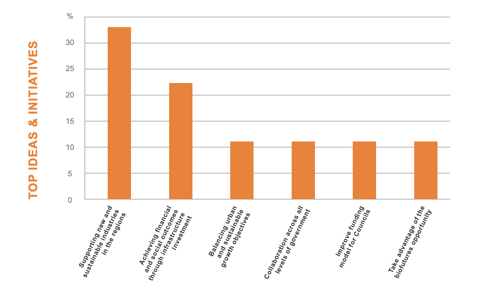
- Ensuring the social and economic prosperity of the regions will require continued strong leadership to deliver new, sustainable industries and the infrastructure investment and delivery required to support this. These industries, including biofutures, will contribute to the diversification for the Queensland economy and create sustainable jobs in the regions.
- Local Councils must improve funding models, providing the stability required by infrastructure projects. This will require collaboration across all levels of government and will be critical to meeting the needs of communities and the regions.
- The continued effort by Councils to balance growth objectives without sacrificing the local environment will also be important in meeting the need for sustainable growth.


